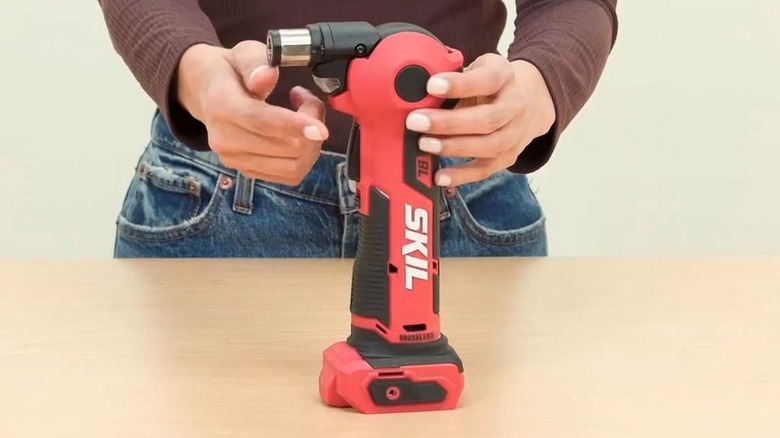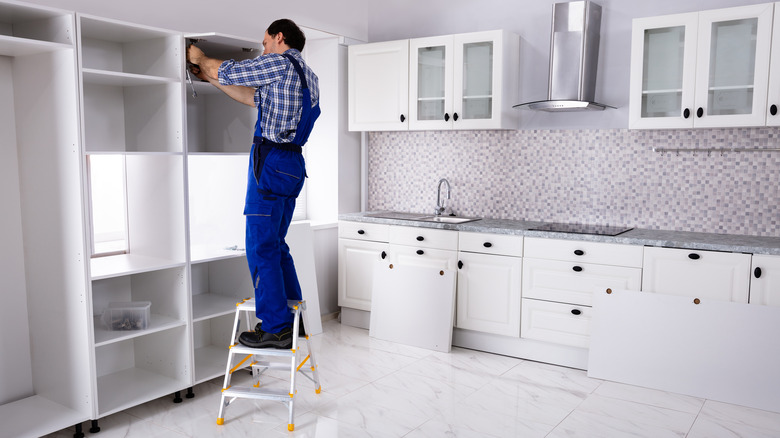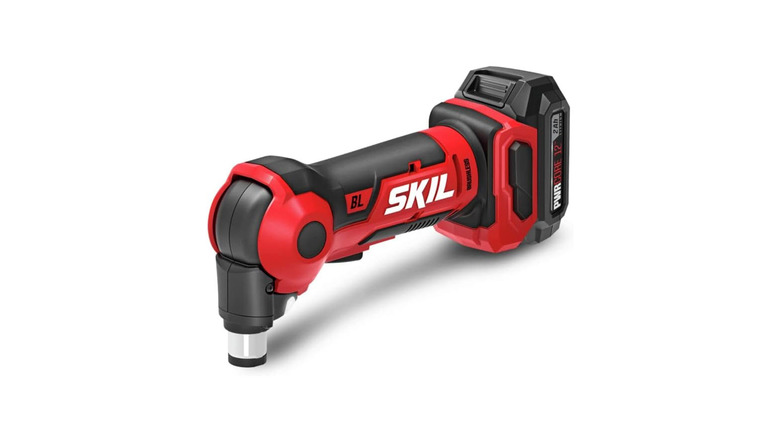An Auto Hammer Is A Tool You'll Wish You Had Sooner
A hammer isn't a tool that seems like it needs to be improved, as it has existed in various forms for a long time. It's one of those tools that's so durable that when something goes wrong — a bent nail or hurt finger, for instance — we generally know it's our fault, not the tool. But, when doing plenty of hammering in different types of spaces, it soon becomes clear there are few areas where some rapid, automatic assistance from a top power tool manufacturer might be appreciated. Enter the auto hammer, which is exactly what it sounds like.
An auto hammer is simply an electric hammer that can deliver significant striking force to nails using a rapidly firing piston (not to be confused with pneumatic nailers, electric chisels, or rotary hammers). They're typically battery-powered, feature rotating heads for different hammering angles, and offer precise nail driving with a piston firing thousands of times per minute. While an auto hammer can be used for regular hammering if you simply don't feel like doing it manually, many of them are actually intended for dimly lit spots, hard-to-reach areas above, and confined spaces with angles where it's otherwise difficult to swing forcefully. But this doesn't mean your regular hammer has to worry about heading to the garage sale anytime soon.
Helpful features of the auto hammer
Take the SKIL PWRCORE 12, for instance. The cordless auto nailer can hammer nails up to 3.5 inches long with 4200 impacts per minute (IPM). It features a magnetic collet that can securely hold nails in place for one-handed use and allows you to rotate the head to three different positions (0°, 45°, and 90°). So, if you're working with something like cabinetry where your arm has to uncomfortably snake through to hammer nails in, lining the nail up and turning the head without having to turn the entire hammer could be a convenient application.
It's not that a regular hammer couldn't get that done as well, but auto hammers seem to thrive in areas where we tend to be stubborn and might be prone to ache or go a little numb after hammering repeatedly in an awkward position. Auto hammers with magnets help keep the nail straight, especially if you turn on the LED light while hammering in the dark.
Is an auto hammer better than a traditional hammer?
When looking for one, you may notice that auto hammers aren't exactly a saturated market and are far outnumbered at the moment by old-fashioned hammers. Both Craftsmen and Ryobi released auto hammers years ago to mixed reviews, and both are a bit difficult to find online. It's partially because auto hammers can come with a few drawbacks as well. They tend to be better at handling smaller nails, are often loud, and can struggle with that last hit that gets the nail flush in. While there's some convenience, the tool is far from perfect, and a traditional hammer may serve you better in certain circumstances.
One's still likely to use a regular hammer for general, easy-access hammering, and experienced carpenters will likely do it faster than the auto hammer can. But, for the occasional cramped spot and dark area where getting that nail in might normally take as long as 10 easy ones, an auto hammer may prove itself useful. Perhaps it's best to keep one of each on your tool belt so you'll have the right tool for any situation.


